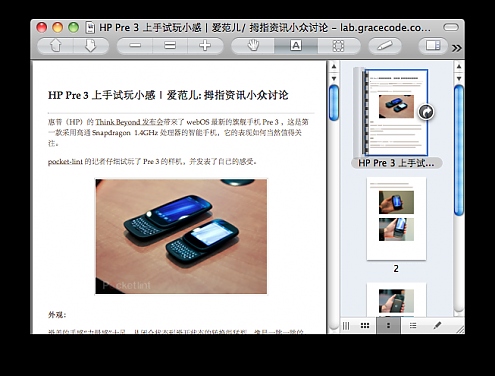这是来自perfgeeks.com的一篇文章,介绍了一些常见的工具,还有一个脚本。
在用YII框架的时候,我用的是hightman写的一个cssmin的插件,可以直接把css和js进行合并到一个文件。对于图片,我都是把这个艰巨的任务交给前端,由他们完成,至于他们用什么样的png或者gif之类的优化软不不是我关心的了。OK,先上文章
来源网址是是:http://www.perfgeeks.com/?p=660
内容如下:
更小的静态资源(js、css、png、gif),意味着更少的网络传送时间。构建的时候,可以把这些静态资源进行压缩优化(不像gzip/deflate压缩),使之更小化。有很多相应的开源工具帮助你完成这项工作。
javascript
- Google Closure Compiler
- UglifyJS
- YUI Compressor
- ShrinkSafe
- 其它,比如JSMIN
Node.js、jQuery1.5开始使用UglifyJS,UglifyJS压缩比YUI Compressor更小、比Google Closure Compiler更安全。尽管如此,但UglifyJS需要部署NodeJS环境,所以我们还是选择使用Google Closure Compiler
style(css)
- CSSTidy
- YUI Compressor
- Yslow/Google Page Speed
CSSTidy和YUI Compressor都很棒,我们还是选择老牌的YUI Compressor,因为我们更熟悉它,它也能够满足我们的需求。
png8/gif图片
- Optipng
- AdvanceCOMP(advpng、advdef)
- ImageMagic(mogrify、identify、convert)
- Pngcrush
- Pngout
- gifsicle
- jpegtran
任何大一点的网站页面都会使用到不少图片,压缩优化图片很有必要。选择什么样的图片格式,决定了怎么去压缩图片。一般而言,只要是非动画图片,我们 推荐png8,即便是颜色很少的小图片(尽管这样的图片gif有更高压缩性,但应该使用css sprites)。Pngout没有开放源码,仅能在Window NT平台使用,所以我们并不考滤使它。Pngcrush虽然很好用,但是optipng、advpng以及advdef结合使用能把图片压缩得更小,所以 我们选择optipng、advpng以及advdef压缩优化PNG图片。 Optipng压缩优化图片、而advdef则优化压缩算法。
构建脚本
发布产品的时候,我们希望构建前端资源,包括压缩优化、合并等等。构建应该尽量满足:
1.整个过程是自动的,不需要人工介入
2.所有的操作都是安全的
3.免费的命令行工具
我们这里应用bash写了一个简版的部署脚本,能够简单地应付中小型网站静态资源发布。
- #!/bin/sh
- #filename:build.sh
- IN_FILE="/var/www.imgwell.com/themes/ocean/misc"
- OUT_FILE="/var/www.imgwell.com/misc"
- EXCLUDE_FILES="jquery.min.js LAB.min.js"
- GOOGLE_COMPILER="/opt/build/bin/compiler.jar"
- YUI_COMPRESSOR="/opt/build/bin/yuicompressor-2.4.6.jar"
- OPTIPNG="/usr/local/bin/optipng -quiet -o3 "
- ADVPNG="/usr/local/bin/advpng -q -z -4 "
- ADVDEF="/usr/local/bin/advdef -q -z -4 "
- function mt_ver_code() {
- local MATRIX="23456789ABCDEFGHJKLMNPQRSTUVWXYZabcdefghijkmnpqrstuvwxyz"
- local LENGTH=12
- while [ "${n:=1}" -le "$LENGTH" ]; do
- local PASS="$PASS${MATRIX:$(($RANDOM%${#MATRIX})):1}"
- let n+=1
- done
- echo -n ${PASS}
- }
- function mt_file_ext() {
- local FILE=`basename -- "$1"`
- echo -n "${FILE##*.}"
- }
- function mt_file_size() {
- if [ -f "$1" ]; then
- echo -n `ls -l -- "$1" |awk '{print $5}'`
- else
- echo -n 0
- fi
- }
- function mt_has_exclude() {
- if [ -z "$EXCLUDE_FILES" ]; then
- echo -n 0
- return 0
- fi
- echo "$EXCLUDE_FILES" |grep -q -w -- "${1}"
- if [ $? -eq 0 ]; then
- echo -n "1"
- else
- echo -n "0"
- fi
- }
- function mt_google_compile() {
- java -jar "$GOOGLE_COMPILER" --js $1 --js_output_file $2
- }
- function mt_yui_compressor() {
- java -jar "$YUI_COMPRESSOR" $1 -o $2 --charset utf-8
- }
- function mt_png_opti() {
- [ -f "`echo ${OPTIPNG} |awk '{print $1}'`" ] && ${OPTIPNG} "${1}"
- [ -f "`echo ${ADVPNG} |awk '{print $1}'`" ] && ${ADVPNG} "${1}"
- [ -f "`echo ${ADVDEF} |awk '{print $1}'`" ] && ${ADVDEF} "${1}"
- }
- function __main__() {
- [ -d "$IN_FILE" ] || exit 1
- local VER_CODE=`mt_ver_code`
- local FILE_STATUS="!"
- mkdir -p "${OUT_FILE}/${VER_CODE}"
- for f in `ls -1 "$IN_FILE"`; do
- if [ -d "${IN_FILE}/${f}" ] ; then
- continue
- fi
- local HAS_EXCLUDE=`mt_has_exclude "${f}"`
- local FILE_SRC_SIZE=`mt_file_size "${IN_FILE}/${f}"`
- if [ "`mt_file_ext "${f}"`" = "js" -a "$HAS_EXCLUDE" = "0" ]; then
- mt_google_compile "${IN_FILE}/${f}" "${OUT_FILE}/${VER_CODE}/${f}"
- FILE_STATUS="G"
- elif [ "`mt_file_ext "${f}"`" = "css" -a "$HAS_EXCLUDE" = "0" ]; then
- mt_yui_compressor "${IN_FILE}/${f}" "${OUT_FILE}/${VER_CODE}/${f}"
- FILE_STATUS="Y"
- elif [ "`mt_file_ext "${f}"`" = "png" -a "$HAS_EXCLUDE" = "0" ]; then
- cp "${IN_FILE}/${f}" "${OUT_FILE}/${VER_CODE}"
- [ -f "${OUT_FILE}/${VER_CODE}/${f}" ] && {
- mt_png_opti "${OUT_FILE}/${VER_CODE}/${f}"
- FILE_STATUS='O'
- }
- else
- cp "${IN_FILE}/${f}" "${OUT_FILE}/${VER_CODE}"
- if [ $? -eq 0 ]; then
- FILE_STATUS="-"
- else
- FILE_STATUS="D"
- fi
- fi
- local FILE_DST_SIZE=`mt_file_size "${OUT_FILE}/${VER_CODE}/${f}"`
- echo "${FILE_STATUS} ${HAS_EXCLUDE} ${f} ${FILE_SRC_SIZE}/${FILE_DST_SIZE}"
- done
- echo "===========/" $VER_CODE "\=========="
- }
- __main__
执行结果如下
O 0 6N9FQPpTHCy.png 820/258
Y 0 base.css 40171/35530
O 0 FSEB6oLTK3I.png 10362/10362
- 0 GsNJNwuI-UM.gif 522/522
O 0 heart.png 921/807
O 0 IJYgcESal33.png 5771/5771
O 0 _IKHHfAgFQe.png 2635/2302
G 0 jquery.elastic.js 4988/1665
- 1 jquery.min.js 85260/85260
G 0 jquery.ui.dialog.js 10074/5274
G 0 jquery.ui.pview.js 4565/2878
- 1 LAB.min.js 5537/5537
O 0 lFahQXTaTNO.png 90/90
G 0 mutfa.js 36958/21777
O 0 nCItFQafRu8.png 452/288
O 0 p13yZ069LVL.png 792/219
- 0 plupload.flash.swf 18537/18537
G 0 plupload.full.js 48277/46682
Y 0 position.css 7737/7440
O 0 star.png 3292/283
G 0 stars.js 6333/2622
Y 0 ui_plugin.css 12794/12079
G 0 up.js 6230/3991
- 0 uVR6w3wRHEJ.gif 54/54
O 0 WSQ2wnhSG-F.png 245/229
- 0 _ZWZupdaAgS.gif 827/827
===========/ LruQcmx4Zi84 \==========
总结
1.UglifyJS压缩比YUI Compressor更小,比Google Closure Compiler更安全。不想冒险,还是应该选择UglifyJS。若想最小化,可以选择Google Closure Compiler
2.YUI Compressor压缩css文件。但CSSTidy也很不错
3.optipng -o3 *.png |advpng -z -4 *.png |advdef -z -4 *.png 将最大化压缩优化png图片
4.网页尽量使用png格式图片,并且压缩优化它,使之最优
-------------------------------
纠结,原文中的代码是有配色的,但是COPY过来就没有配色了,而自带的配色没有bash的配色。所以。。。将就点看了,或者看原文吧:http://www.perfgeeks.com/?p=660


